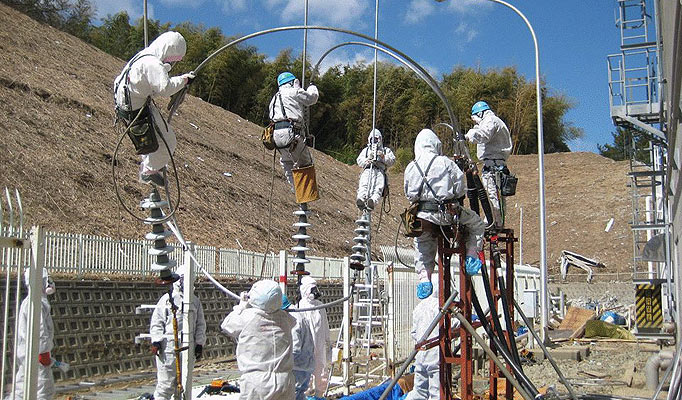On March 11, 2011, a magnitude-9 earthquake struck northeastern Japan at 2:46pm local time, unleashing a deadly tsunami. Less than an hour after the earthquake, the first of many tsunami waves hit Japan’s coastline. The tsunami waves reached heights of up to 39 meters (128 feet) at Miyako city and reached as far as 10 km (6 miles) ashore in Sendai, destroying everything in its wake. More than 15,000 people died.
At the Fukushima Daiichi Nuclear Power Plant, the tsunami caused a cooling system failure resulting in a nuclear meltdown and the release of radioactive materials. The waves forced the failure of electrical power and backup generators, leading the plant to lose its cooling capabilities. The retreating water sucked a vast amount of rubble into the depths of the Pacific Ocean, contaminating the traditional fishing grounds of the local companies.
Five years after the disaster a cleanup effort to remove the debris has finally been launched by collectives of local fishermen, who aim to start trial fishing expeditions within the area from 5 kilometers (3 miles) to 20 km (12 miles) off the wrecked plant.
On Monday Soma-Futaba Fisheries Cooperative Association send out 32 fishing boats to recover debris from the ocean floor. That fleet is focusing their efforts on the North side of the nuclear power plant.
On Tuesday, the Iwaki City Fisheries Cooperative Association also sent in their fleet to help with the cleanup efforts of the southern side of the contaminated segment.
Once the debris is pulled out and delivered to shore, the unloading of the waste is handled by the industrial waste treatment company. The rubble is then sent to a temporary storage facility where after an inspection for radioactive reading, cleared waste is disposed of in an industrial manner. It is as of yet unclear how the contaminated waste will be treated.
The cleanup work of the seabed endorsed by the Fisheries Agency is scheduled to last at least until February of next year. Fishing on a trial basis can start as early as March.
However such a prospect seem problematic as the recently-completed ice wall around the crippled station has failed to meet expectations, with contaminated groundwater still seeping into the sea.
The $320 million Land-Side Impermeable Wall was built to halt an unrelenting flood of groundwater into the damaged reactor buildings and consequent flow of the contaminated water into the ocean.
But on Tuesday the Japanese government and plant operator Tokyo Electric Power Co. reported that 1.5 km (1 mile) barrier frozen barrier failed to produce the intended results, Nikkei reported.





















